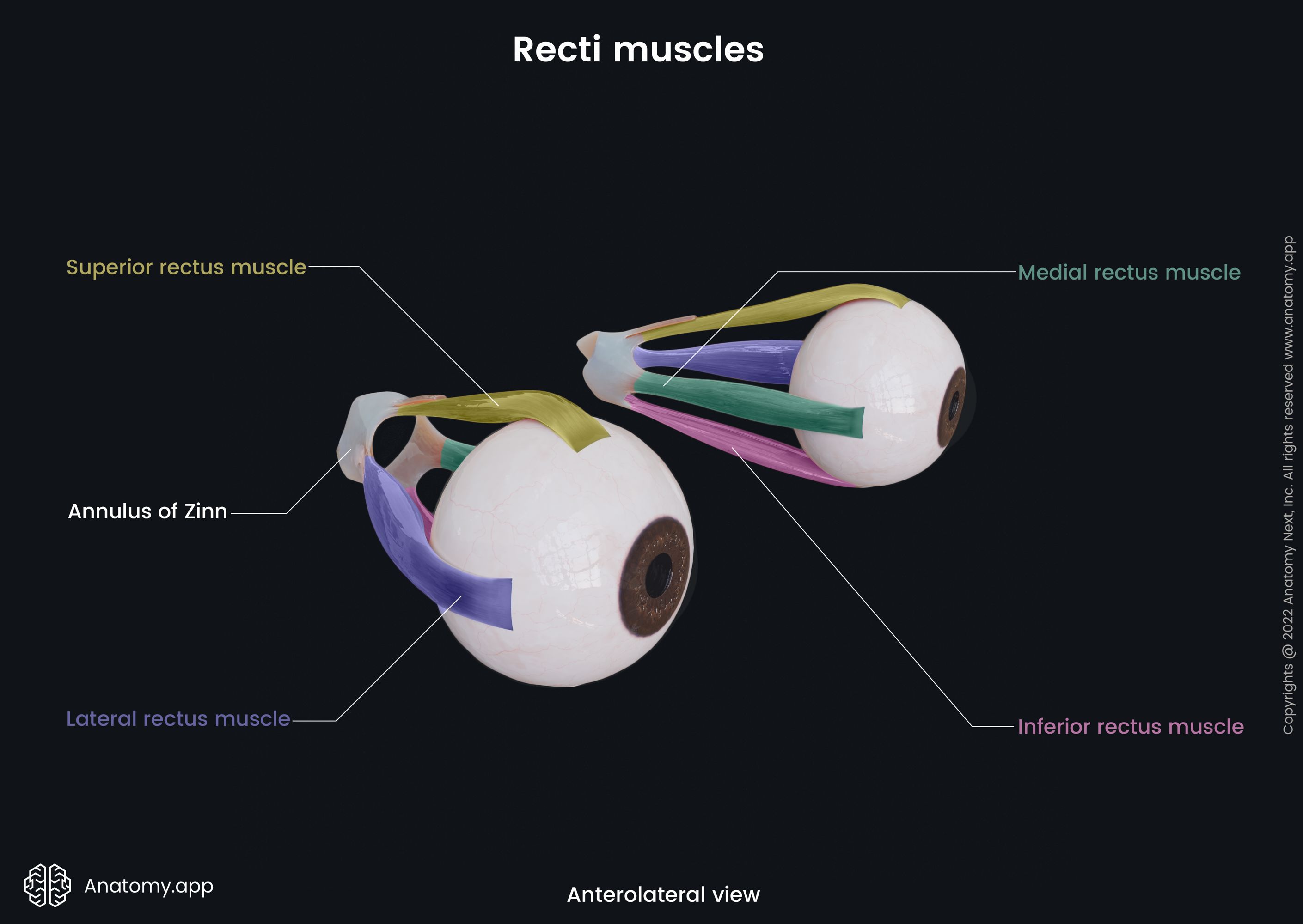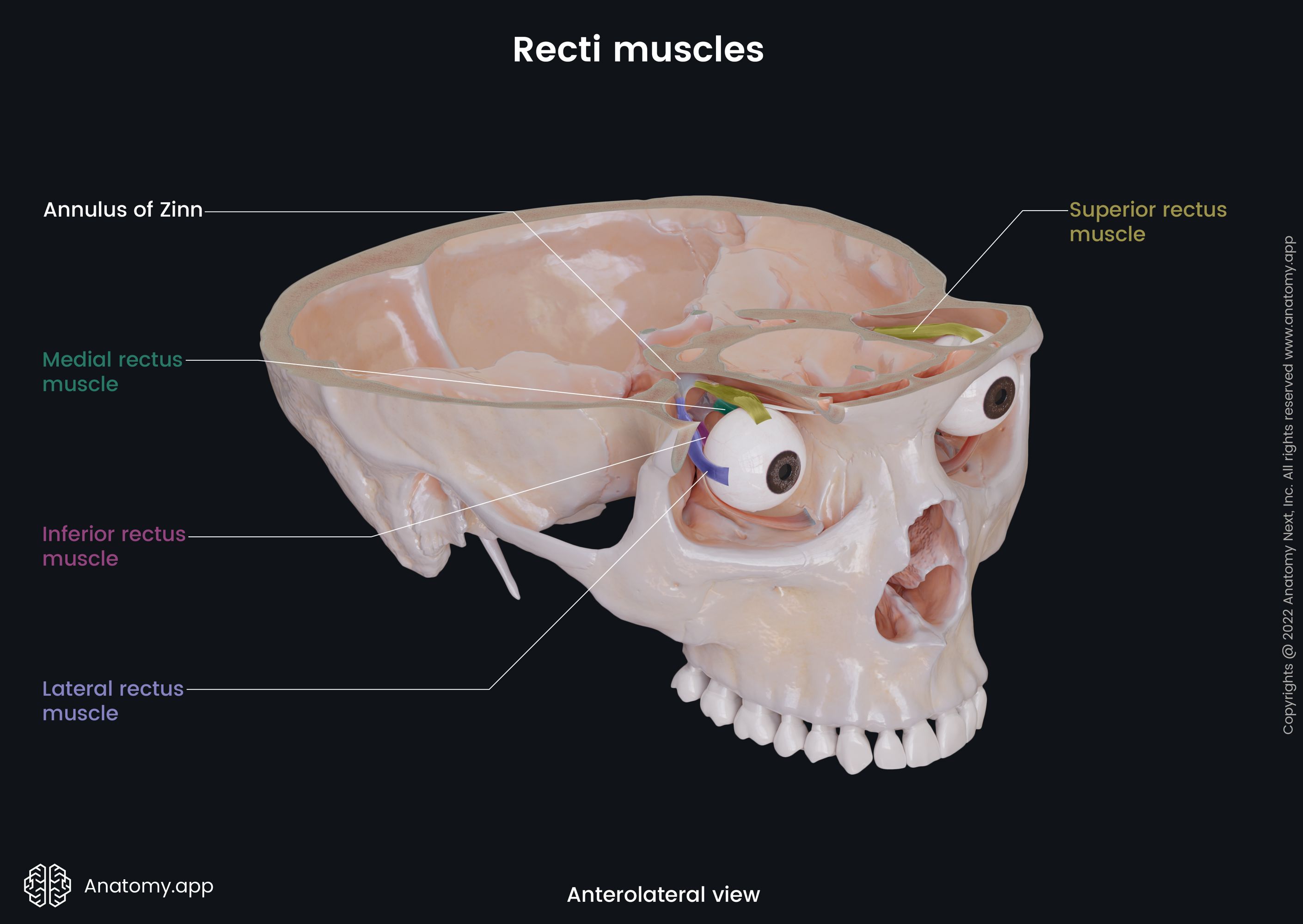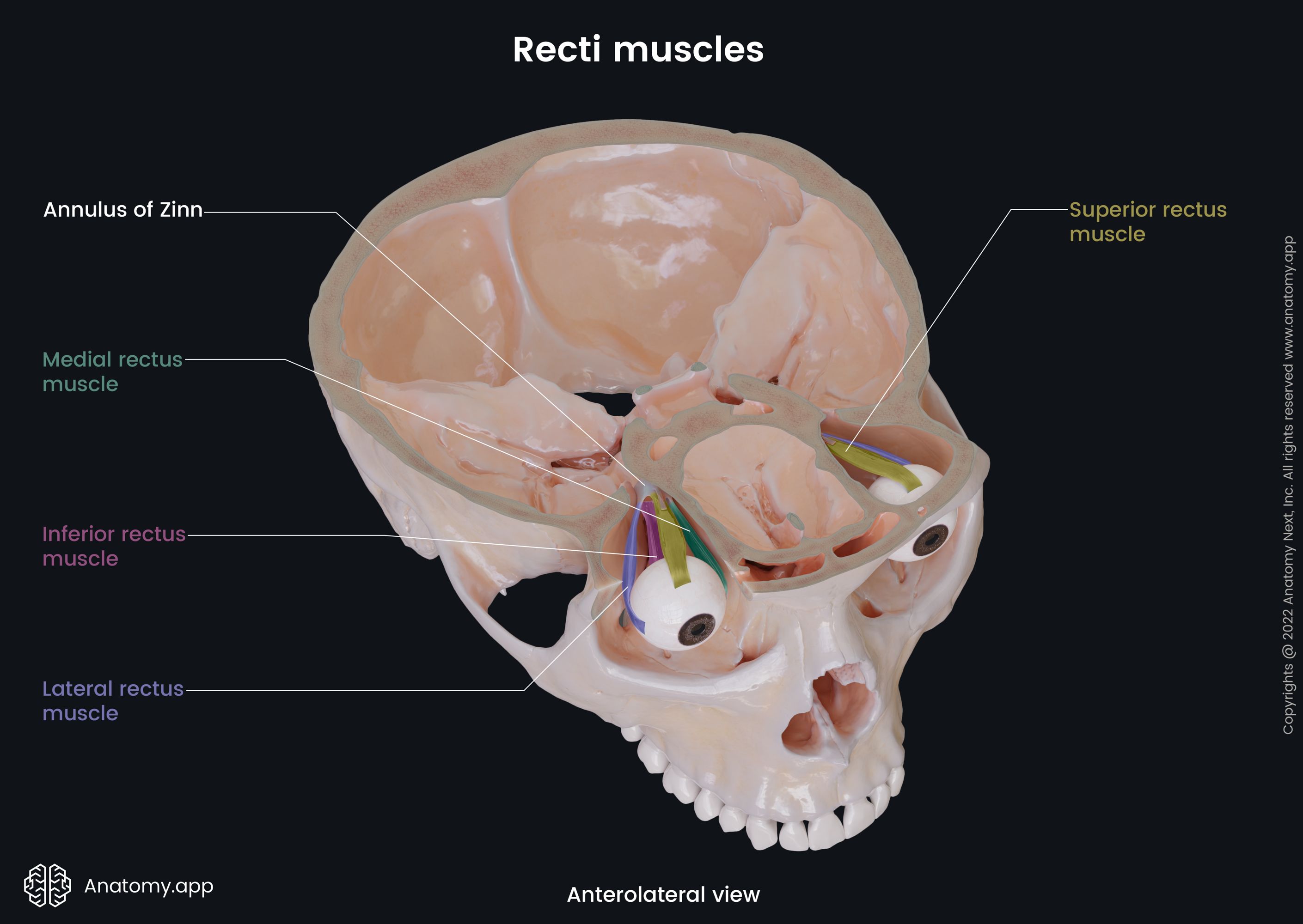- Anatomical terminology
- Skeletal system
- Joints
- Muscles
- Head muscles
- Neck muscles
- Muscles of upper limb
- Thoracic muscles
- Muscles of back
- Muscles of lower limb
- Heart
- Blood vessels
- Lymphatic system
- Nervous system
- Respiratory system
- Digestive system
- Urinary system
- Female reproductive system
- Male reproductive system
- Endocrine glands
-
Eye
- Accessory structures of eye
- Ear
Inferior rectus
The inferior rectus (Latin: musculus rectus inferior), also called the inferior rectus extraocular muscle, is one of the six extraocular muscles that are in control of eye movements. Actions of the inferior rectus result in moving the visual gaze down and in.
Origin
The inferior rectus originates from the common tendinous ring, below the optic canal.

Insertion
The inferior rectus inserts obliquely into the sclera below the cornea, approximately 1/4 inch (6.5 mm) behind the corneal limbus.

Action
The contractions of the inferior rectus provide the depression and lateral rotation of the eyeball.

Innervation
The inferior rectus is innervated by the oculomotor nerve (CN III).
Blood supply
The arterial blood supply to the inferior rectus is provided by the ophthalmic artery and the infraorbital branch of the maxillary artery.